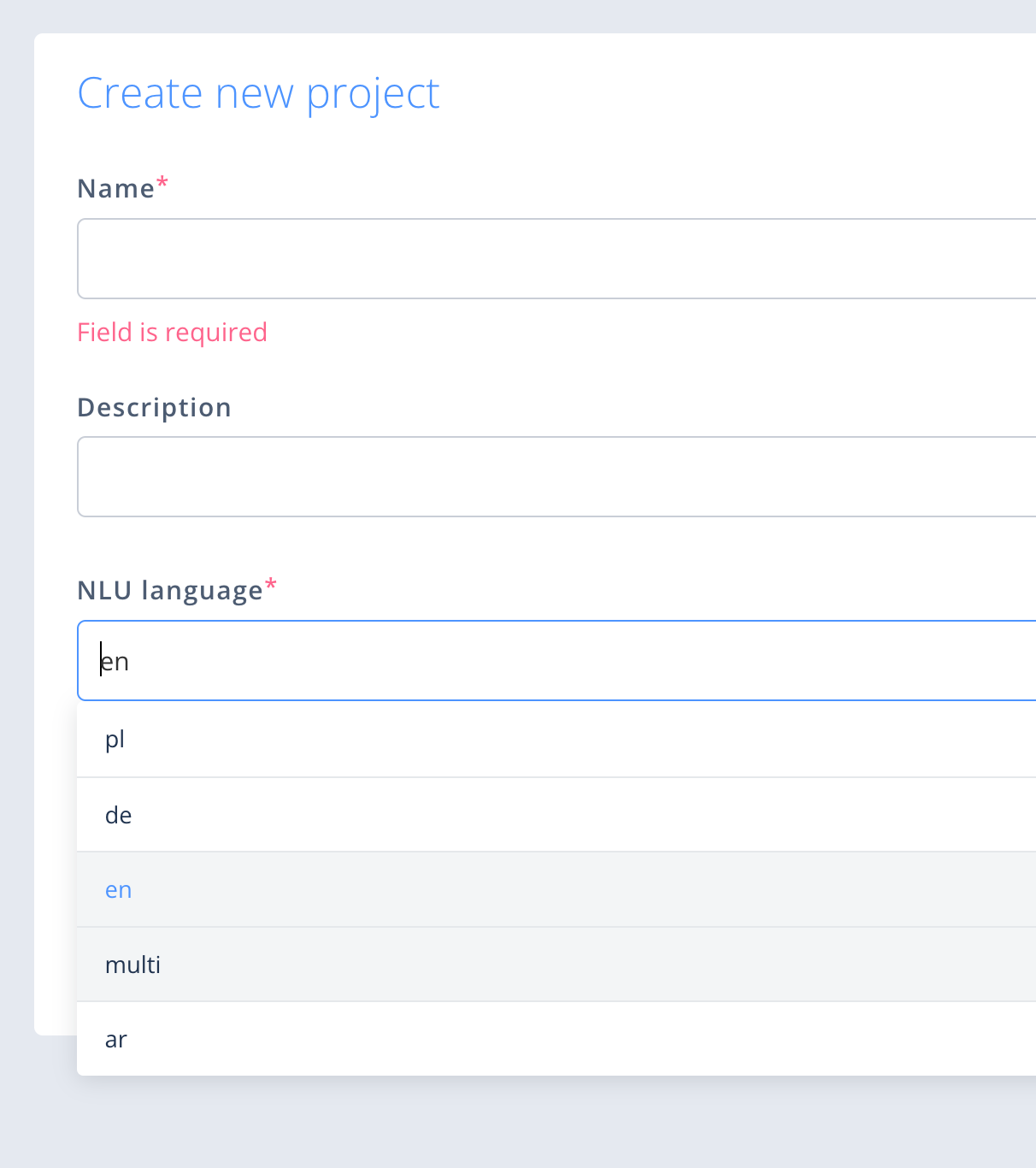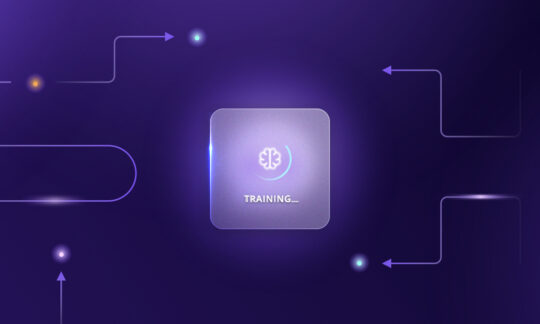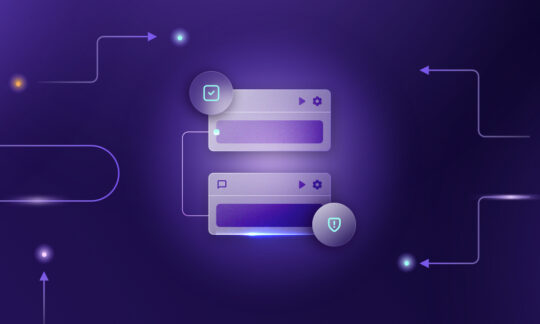Multilingual Chatbot: Going Beyond the Language Barrier
Table of contents
The whole purpose of a successfully implemented chatbot in any business is to generate savings and revenue while creating a great customer experience. This ought to be rather self-explanatory, and any beginner bot designer who’s spent more than a few days of time trying to carve out the right path of their chatbot journey for themselves will already be familiar with this.
Assuming, though, that your business already has a functioning chatbot and you’ve undertaken all the right steps to make the virtual assistant flourish – why stop there?
Regardless of where your company is based, expanding your chatbot’s capabilities by adding multilingual support will let you reach past communication barriers and create an engaging, user-centred experience for many, many more customers. This means that, on the one hand, businesses operating in highly localised markets with homogenous customer bases, in theory, don’t need multilingual support. However, they can still benefit greatly by serving their customers in their native language of operation and adding the option to communicate with the chatbot in English or in the language of any other market they are seeking to expand to. On the other hand, industries such as travel agencies or airlines can push the envelope even further. Since their customers use a wide variety of languages, it becomes crucial to eliminate communication barriers and create an engaging experience for as many customers as possible.
So, in this next instalment of the Bot Building Series, let’s dive into multilingual chatbots!
What Are Multilingual Chatbots and How Do They Work
Multilingual bots, just like any AI chatbot, take on the role of virtual assistants which support the customer service teams in taking care of client requests and providing help as required. The distinguishing difference lies within their ability to communicate with the user in more than just one language.
But how does a chatbot know it should veer off from its main communication language and adapt to the customer? There are plenty of ways, both basic and advanced:
- IP detection: by analysing the native IP address, the chatbot can recognise what country or region the client is connecting from, and switch to the official language appropriate for the location.
- Customer selection: a simple prompt asking the user to state their intent and select the preferred language makes it easy for both parties while making your clients feel like they have more agency. They can also change the language of the conversation midway through, for example, if the discussed topic becomes too difficult to understand because of specialised terminology, making the user want to fall back to a language they’re more comfortable with.
- Web browser settings: the bot can identify the user’s preferred language based on information from the browser they used to initiate the conversation.
- Multilingual NLUs: this takes the multilingual chatbot a step further – a chatbot outfitted with a multilingual NLU can understand different languages without issue and doesn’t get confused even if the client were to change the language during the conversation. However, it’s crucial to remember NLU and NLG are different concepts, and programming a multilingual NLG is a whole other story. Basically, if a client begins the conversation in English and then switches to French, a multilingual NLU will allow the chatbot to fully comprehend each message, but without an NLG that also includes French LLMs, it could only ever reply in English.
- LLMs trained using GPT architecture: the GPT technology turns chatbots into virtual linguistic maestros who generate responses in multiple languages, thanks to their extensive training on diverse text data. It isn’t a perfect be-all, end-all solution, though, for those bot designers looking to tap into a diverse market quickly, it’s certainly a convenient way.
- Language Detection APIs: solutions like Google Translate’s API automatically detect the language of a given text input and can easily switch mid-conversation just as fast as the user does. Additionally, since this happens on the fly, it avoids situations where the chatbot has to reset upon seeing the user change language, preventing the loss of context already established in the conversation, just like when using NLU.
How Your Business Can Benefit From Multilingual Chatbots
As businesses expand globally, it’s becoming increasingly important to offer multilingual customer support. Chatbots that can converse in multiple languages provide a scalable way to deliver personalised experiences to customers worldwide. And, wouldn’t you know it, personalisation is often the key to securing your clients’ trust. 91% of consumers are more likely to shop with brands that place focus on personalisation. It isn’t exactly a mind-blow of a statement to claim that implementing multilingual chatbots is simply a smart move for companies operating internationally.
The added personal touch when customers can interact in their native language makes them feel understood and seen. Naturally, this increases brand loyalty and often leads to long-term relationships being formed between the brand and the client.
But making your business more customer-centric isn’t the only upside. Some others are intrinsically linked to your company’s internal infrastructure. If you outfit your chatbot with multilingual capabilities, it drastically lowers the need to hire and train customer service professionals for each market. Naturally, you can’t expand to another country and leave the chatbot completely unsupervised, but the benefits generally make up for the costs of expanding your workforce. And if you don’t see international expansion in your company’s future but would still like to tap into other markets where English doesn’t dominate, training your chatbot to understand another language is way more efficient than paying for language courses for your employees.
In addition to operational efficiencies, multilingual chatbots offer competitive advantages. When choosing between two rival brands, why should a customer who can’t easily communicate in the business’s operational language pick that company over the one that caters to them through multilingual support? By offering multilingual chats, you secure yourself as the more appealing choice to potential customers.
This isn’t to say that developing multilingual chatbots doesn’t require heavy resources – you need time, money, and the right technology. Forward-thinking companies, however, will quickly catch on and see that the rewards of personalised, culturally-sensitive customer experiences far outweigh the investment. If your business model excludes anyone who doesn’t speak English, but you still want those customers, you’re acting against your best interest and maybe even missing out on a world of opportunity. Catering to your client base by enabling them to talk with a chatbot in their language shows that your company cares enough to work for the client, and not just see them as a source of potential monetary value. Quite ironically, showing that kind of openness through the multilingual support of an otherwise emotionless chatbot goes a long way.
Multilingual Chatbots: Popular Use Cases
Before setting out to design your chatbot with built-in multilingual support, it’s worth considering whether it’s a good fit for your business. This will depend primarily on your country of operation and the sector where you conduct business. But, let’s be real here – sufficiently covering the topic of the general applicability of multilingualism per country or region would take an encyclopaedia’s worth of text. Instead, let’s zoom in on some of the industries where multilingual customer support shines the brightest.
Travel Industry
The clients of travel agencies would love to see multilingual customer support when booking their holidays. Being able to simply input questions and commands as a multilingual chatbot on a server halfway across the world arranges your holiday for you is the ultimate “sit back and relax” experience. And that’s exactly the kind of service companies like WestJet set out to deliver. WestJet’s AI assistant Juliet guides holidaymakers every step of the way, providing them with travel updates, and recommendations during their stay, and managing their reservations, all with full English and French NLU support. Implementing Juliet has netted WestJet a whopping 24% increase in customer satisfaction scores. She pretty much deserves to go on holiday herself after that!
Airline Industry
Chatbots in the aviation industry are of indispensable help. They handle flight information, booking, customer support, the whole nine yards. Bump their functionality up a notch by adding more languages into their playbook, and suddenly the benefits for passengers skyrocket.
Plenty can go wrong at a busy airport at any time. Though most locations and points of interest will be marked in English, getting adequate support when your luggage gets lost, for example, may not be so easy, especially when travelling to more exotic places. For precisely such situations, Tokyo International Airport implemented Bebot, a multilingual chatbot that helps travellers and informs them about airport facilities and flights. Bebot uses English, Chinese, Korean, and Japanese, and is a blessing to many of those who find themselves at Haneda Airport and can’t read Japanese, or simply want to get help as quickly as possible without standing in a busy line at the tourist information counter.
Airlines like Norwegian have also joined the party and deployed their multilingual chatbots to take care of their customers, book flights, manage reservations, and more. Norwegian’s chatbot handles all kinds of requests in both English and, well, Norwegian, but its multilingual NLU allows it to understand most European languages.
Hospitality Industry
Multilingual chatbots are also booming in the hotel industry. By leveraging this technology, hotels can adapt their services to meet customer demands and make booking easier while providing excellent personalisation. One such hotel chain in Japan, Fujita Kanko, helps guests orient themselves and get information about the available services and amenities on the premises of their hotels, while also answering basic questions. Their AI concierge can answer clients in Japanese, English, Chinese, and Korean.
High-profile design and visitor comfort are often at the forefront of the experience for many hotels. Such is also the case of Victoria Garden, a French chain offering multilingual support in French and English. Their chatbot boasts a stupendous 97% CSAT score and remains available 24/7.
Multi-Language Support Made Easy
Building your multilingual chatbot is simpler than you think. SentiOne Automate utilises language detection integration to seamlessly recognise what language your customer uses and switch accordingly. Our pre-trained NLU makes the setup process even easier and more intuitive.

Multilingual feature on SentiOne Automate
With support in Polish, English, Arabic, Italian, German, Spanish and French, our NLU can achieve up to 96% intent recognition. Discover our advanced Natural Language Understanding framework and effortlessly develop multilingual bots that elevate the user experience of your business. For more, don’t hesitate to contact our team of experts.
Article Summary
This article discusses the benefits and implementation of multilingual chatbots in businesses. Multilingual chatbots can communicate with customers in multiple languages, providing personalised experiences and improving customer satisfaction. Various methods, such as IP detection, customer selection, multilingual NLU, and language detection APIs, can be used to determine the user’s language. Implementing multilingual chatbots offers advantages such as cost savings, operational efficiency, and competitive differentiation. Industries like travel agencies, airlines, and hotels can greatly benefit from multilingual customer support. Overall, multilingual chatbots enhance customer experience and help businesses tap into new markets.



